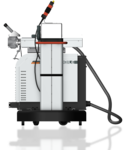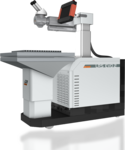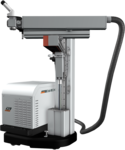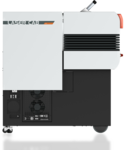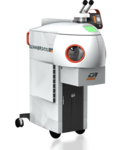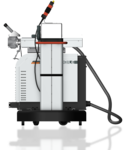Difference between manual and automated laser cladding
Manual laser cladding
With this process, the welder looks through optics onto the object to be welded and places the filler metal manually onto the area to be welded. In most cases, this filler metal consists of a thin wire with a diameter between 0.15 and 0.8 mm. For best results, the welder directly and instantly varies the welding direction and the quantity of the supplied filler metal. Manual laser cladding frequently uses a pulsed laser.
Automated laser cladding
Automated application of filler materials in wire or powder form during laser welding is done by machines. Here, metallic powder can also be used in addition to wire. The required preconditions include specifically designed software in addition to suitable hardware. This software delivers the required CAM data to the laser welding installation, enables setting of volume models, and specifies the welding parameters for the individual coating levels.



